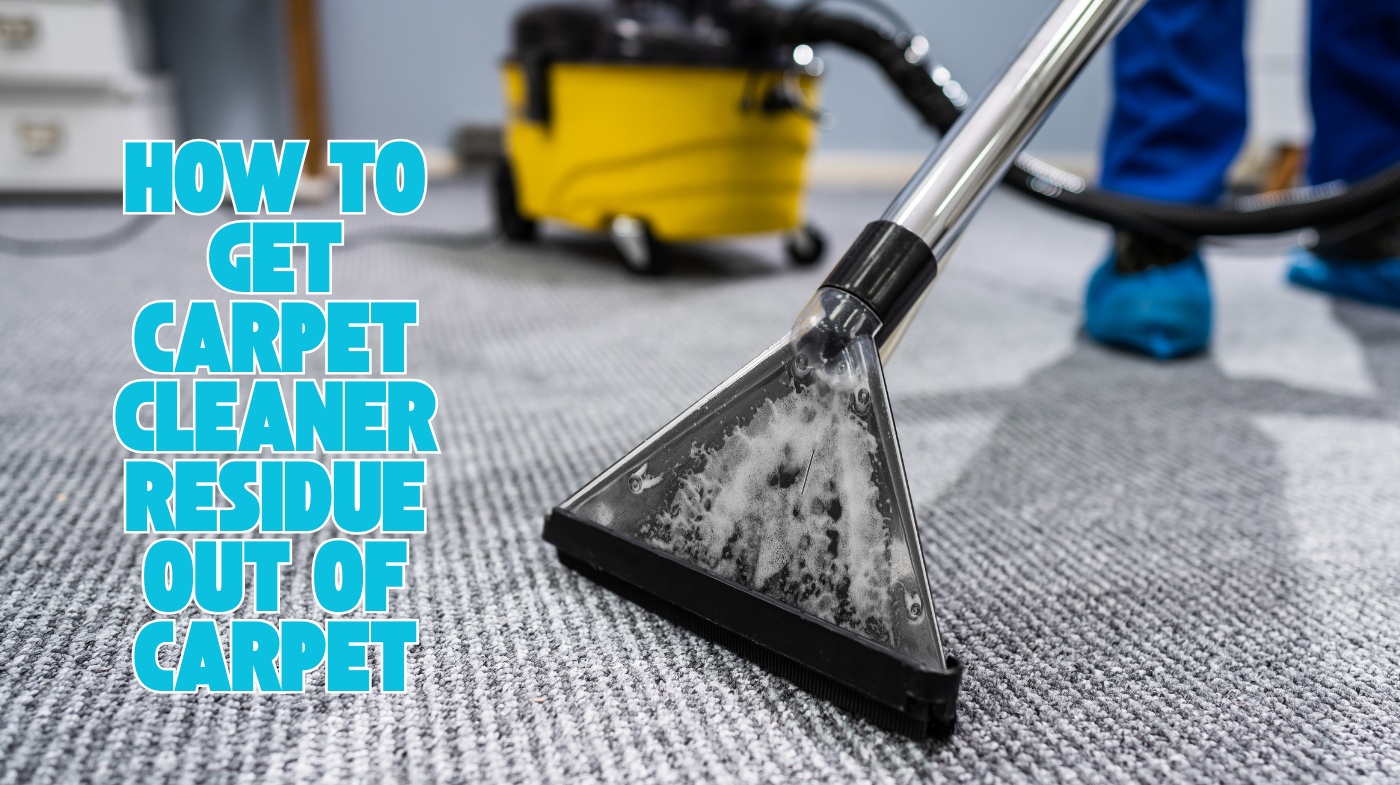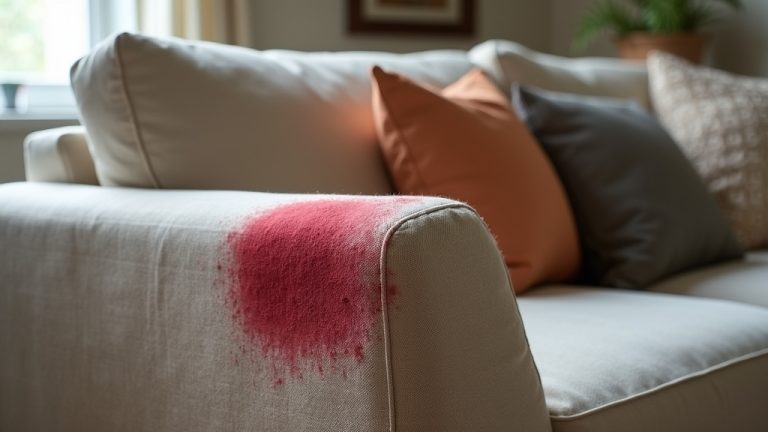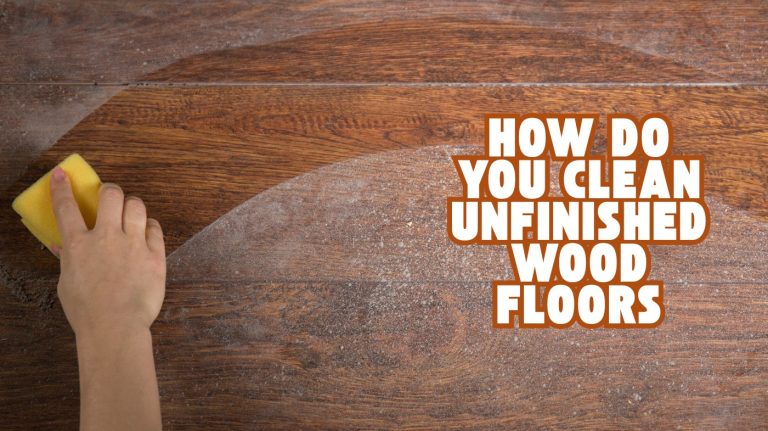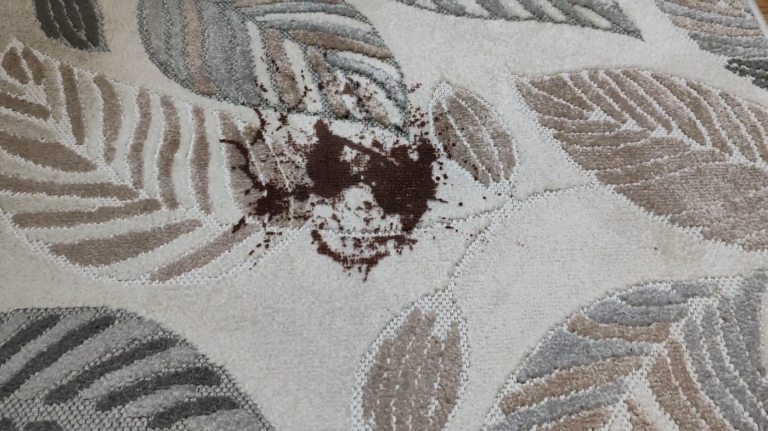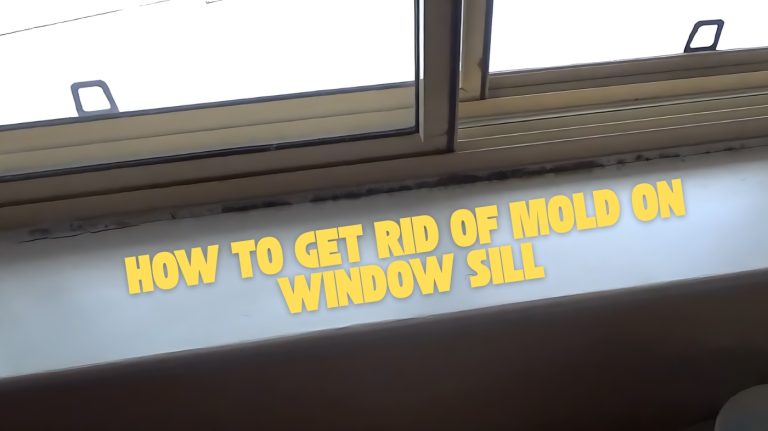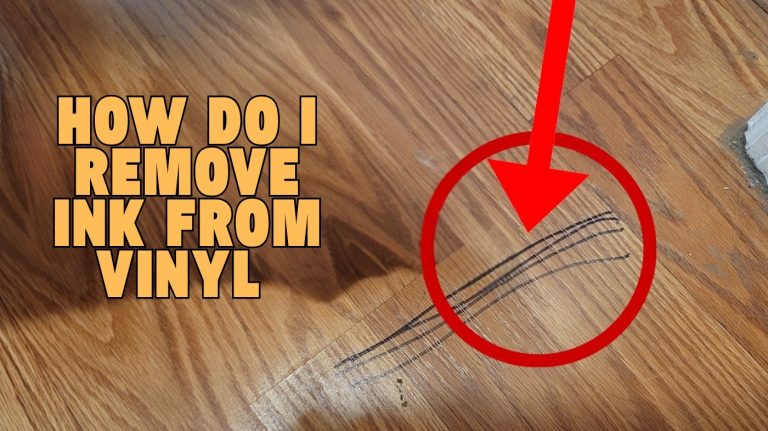How to Get Carpet Cleaner Residue Out of Carpet? Easy Tips
To remove carpet cleaner residue, start by vacuuming thoroughly to lift loose dirt. Then, apply a vinegar and water solution with a few drops of mild soap to neutralize and break down sticky residue, blotting gently without over-wetting.
You can also use diluted rubbing alcohol carefully on a tested patch to dissolve buildup. Sprinkle baking soda and salt, let sit, then vacuum again to refresh fibers.
If DIY methods fall short, professional cleaning can restore your carpet’s look and feel. Learn how to prevent and tackle residue for lasting results.
Key Takeaways
- Use a solution of equal parts white vinegar and hot water with mild dish soap to neutralize and lift carpet cleaner residue effectively.
- Apply rubbing alcohol diluted 1:1 with water on a cloth, gently blotting sticky areas to dissolve and remove residue without damaging fibers.
- Sprinkle baking soda and salt on a dry, vacuumed carpet, let sit for 10-15 minutes, then vacuum thoroughly to absorb leftover cleaning agents.
- Avoid over-wetting carpets; blot excess moisture immediately and ensure thorough drying to prevent residue buildup and mold growth.
- Regularly vacuum and deep clean carpets to minimize residue buildup and maintain carpet health and appearance over time.
The Causes of Carpet Cleaner Residue
Although carpet cleaners aim to lift dirt effectively, many leave behind residue because their soaps and detergents don’t rinse out completely.
These cleaning agents often leave sticky soap particles embedded in carpet fibers, creating a tacky film that attracts more dirt and dust. Choosing cleaning agents without harsh chemicals can help prevent damage to carpet fibers and reduce residue buildup.
When soap formulas aren’t designed specifically for carpets, residue buildup becomes even more likely. Insufficient rinsing during cleaning leaves liquified soil and detergents trapped, worsening stickiness and promoting mildew formation over time. This sticky layer also traps pollutants like allergens and bacteria, which can impact air quality.
Using rental or consumer-grade machines with limited rinsing control increases residue risks, especially in high-traffic areas. This sticky residue traps allergens and pollutants, reducing indoor air quality and making vacuuming less effective.
Signs Your Carpet Has Residue Buildup
You’ll notice residue buildup when your carpet feels sticky or tacky even after cleaning. This residue acts like glue, causing dirt and dust to cling rapidly, so your carpet looks dirty again in no time.
Often, this stickiness results from insufficient rinsing that leaves cleaning solutions behind. Recognizing these signs early helps you address the problem before it worsens. Using the wrong cleaning agent, such as harsh dry cleaning solvents, can also contribute to residue problems if not properly rinsed or applied.
Sticky or Tacky Feel
When your carpet feels sticky or tacky after cleaning, it usually means residue buildup from cleaning products hasn’t been fully removed. This residue often forms a tacky film that stiffens fibers and feels like unwashed hair after shampooing without rinsing.
Environmental factors like high humidity can worsen this condition by slowing down drying times and increasing the risk of residue accumulation. Proper drying techniques and airflow management are essential to prevent such buildup and maintain carpet health.
You’ll notice sticky patches where cleaning solution was overapplied or rinsed poorly. This buildup results from overusing or improperly diluting cleaners, insufficient rinsing, or low-quality detergents not designed for carpets.
Sticky carpets not only attract dirt but can cause mild skin irritation. To identify this, run your fingers over the carpet immediately after cleaning and check for any tacky or stiff areas.
Regular maintenance, including thorough vacuuming and using biodegradable cleaners, can help reduce residue and improve carpet texture.
Rapid Dirt Attraction
If your carpet starts attracting dirt almost immediately after cleaning, residue buildup is often the culprit. This leftover layer, made up of cleaning solutions, surfactants, and liquified soil, acts like adhesive, drawing dust and grime rapidly.
However, when a website or service related to carpet cleaning experiences a service disruption, it can impact customer access to helpful resources.
You’ll notice your carpet looks dirty again quickly, especially in high-traffic spots, despite regular vacuuming. The residue creates a sticky surface on fibers, making dirt stick more stubbornly than on clean carpet.
Over time, this buildup dulls and mats fibers, while stains may seem to rise from deeper layers. Improper cleaning—like using too much detergent or poor rinsing—leaves behind these residues.
To stop rapid dirt attraction, ensure thorough rinsing and use high-quality products. Also, maintain your vacuum to prevent redepositing dirt onto your carpet.
Manual Methods for Removing Residue From Carpet
Although tackling carpet cleaner residue might seem formidable, several manual methods allow you to remove buildup effectively without specialized equipment. Start by applying rubbing alcohol with a soft brush or spray bottle, then gently scrub to dissolve soap residues. Use caution to avoid vigorous rubbing, which can damage fibers.
Wet-dry vacuum extraction is another practical option; it physically removes loosened residue and cleaning agents, preventing deeper settling.
Combine mild dish soap and isopropyl alcohol mixtures for enhanced stain removal before vacuuming. Understanding the porosity of carpet fibers can help tailor cleaning techniques to avoid pushing residues deeper into the pile.
Gentle blotting with damp cloths or soft sponges helps lift residues without pushing them deeper. For sticky spots, shaving cream or club soda can assist initial residue breakdown.
These hands-on techniques maximize residue removal while preserving carpet texture and color. Additionally, applying white vinegar with a fresh cloth can eliminate soap residue and help prevent mold growth on the carpet.
Using Vinegar Solutions to Break Down Residues
Manual methods like rubbing alcohol and gentle blotting work well, but you can boost your carpet cleaning routine by using vinegar solutions to break down residues more effectively.
Mix equal parts white vinegar and hot water, adding a few drops of mild liquid dish soap to enhance stain breakdown without harming fibers. Always pre-vacuum to remove loose dirt, then spray the solution evenly over the affected area.
The acidic nature of vinegar helps neutralize alkaline substances, improving residue removal. For persistent residues, combining vinegar solutions with oxygen-based cleaners can enhance deep cleaning effectiveness.
Combine equal parts vinegar and hot water with mild soap, pre-vacuum, then spray on stains for effective cleaning.
Blot gently with a clean cloth to lift residues without rubbing. Repeat as needed, then rinse with clean water to prevent vinegar build-up.
Keep these tips in mind:
- Test on a hidden spot first to check for discoloration.
- Avoid over-wetting to protect carpet backing.
- Thoroughly dry the carpet post-treatment to prevent mildew.
Applying Rubbing Alcohol Safely on Carpet Fibers
Start by selecting transparent, dye-free rubbing alcohol to prevent color transfer on your carpet. This ensures that cleaning does not cause additional discoloration or damage to the fibers.
Always perform a patch test in an inconspicuous area to check for any adverse reactions before treating the stain. Conducting tests is a standard cleaning safety practice to avoid unintended effects on your carpet.
Apply the alcohol gently, avoiding excessive saturation, to protect your carpet fibers while effectively breaking down residues. Rubbing alcohol is a powerful solvent that dissolves various substances by weakening stain bonds, making it effective for removing cleaner residues.
Choosing Appropriate Alcohol Type
When selecting an alcohol type for carpet cleaning, you’ll want to use clear, unscented isopropyl rubbing alcohol with a concentration between 70% and 90%, as it effectively breaks down stains while evaporating quickly to minimize fiber damage. Always test a small area first to ensure the carpet fibers tolerate the alcohol without damage.
Avoid colored or scented varieties since their dyes and additives can stain your carpet further. Steer clear of acetone-based solvents like nail polish remover, especially on delicate fibers such as wool or silk, as they can cause irreversible damage.
Denatured alcohols without fragrance or dyes might work but always test first for compatibility.
Keep these tips in mind:
- Use only clear, unscented isopropyl alcohol (70%-90%) for safe, effective cleaning.
- Avoid acetone and industrial-grade alcohols to protect fibers.
- Always test on a hidden area before applying broadly.
Because rubbing alcohol dries quickly, it helps prevent prolonged moisture exposure that can weaken carpet fibers.
Gentle Application Techniques
Although rubbing alcohol is effective for removing stains, applying it gently is essential to protect your carpet fibers. Use a clean white cloth or cotton ball to blot rubbing alcohol onto the stain instead of pouring it directly. This minimizes fiber stress and avoids spreading the stain.
Apply sparingly—dilute with water in a 1:1 ratio when possible—and use a spray bottle for controlled, even coverage, limiting application to the stained area. Avoid scrubbing or dragging motions; instead, gently press the applicator repeatedly to lift residue.
Since rubbing alcohol may discolor or weaken certain carpet fibers, it is important to test in small areas first. Also, always ensure proper ventilation when using solvents like rubbing alcohol to reduce health risks.
Replace blotting cloths often to prevent re-depositing stains. After treatment, blot excess moisture immediately and allow the carpet to air dry fully. These careful steps help preserve your carpet’s texture while effectively removing cleaner residue.
Testing Colorfastness First
Before applying rubbing alcohol to clean your carpet, you’ll want to test its colorfastness to avoid unexpected dye bleeding or discoloration. Choose an inconspicuous spot like under furniture or a closet corner, ensuring the area is clean and dry.
Use transparent, dye-free rubbing alcohol and apply a few drops or blot with a saturated white cloth. It’s best to use two different spots for the initial quick test and a more detailed follow-up to confirm safety.
Wait a few seconds, then blot immediately with a clean white cloth to check for dye transfer.
Keep these tips in mind:
- Test at least two spots: a quick initial test and a longer exposure if needed.
- Observe the blotting cloth for any color; dye transfer means avoid alcohol use.
- Mark tested spots discreetly to track results for future cleaning sessions.
- Using pH-neutral cleaning solutions helps ensure safe residue removal without damaging carpet fibers.
How Baking Soda and Salt Can Help Clean Residue?
Since baking soda and salt each bring unique cleaning properties, combining them creates a powerful solution for removing carpet cleaner residue.
Baking soda absorbs moisture, grease, and odors, drawing out residues from carpet fibers while neutralizing unpleasant smells. Salt acts as a mild abrasive that lifts tough stains and breaks down residue components.
Additionally, these ingredients are non-toxic and safe for most carpets, making them ideal for household use. Together, they absorb moisture and loosen build-up, making it easier to vacuum away. It is important to let the carpet air dry naturally after treatment to avoid potential mold or mildew growth.
To use, sprinkle a generous mix on dry carpet after vacuuming, let it sit 10-15 minutes or longer for stubborn residue, then vacuum thoroughly. Repeat as needed. This natural, chemical-free method is safe for homes with pets and children and helps maintain a fresh, residue-free carpet without harsh chemicals or aggressive scrubbing.
Machine Techniques for Effective Residue Removal
When tackling carpet cleaner residue, machine techniques offer targeted and efficient solutions that go beyond manual methods. These machines combine mechanical action with specialized cleaning processes to break down and extract stubborn residues effectively.
- Hot Water Extraction Machines inject high-pressure hot water to dissolve residues while powerful suction removes dirty water. This process requires multiple light passes to avoid over-wetting the carpet. They often incorporate a wet/dry vacuum to enhance cleaning effectiveness by extracting moisture and residual cleaning agents.
- Carbonated Extraction Machines use low-pressure carbonated water to gently lift residues with minimal moisture. This method is ideal for severe buildup.
- Brush and Vacuum Combination Machines agitate carpet fibers with rotating brushes to loosen residues, then vacuum them away. They are best used on dry or slightly damp carpets. Repeating the extraction process several times can improve residue removal and prevent soil attraction caused by leftover cleaning agents.
Precautions and Best Practices During Carpet Cleaning
Although carpet cleaning can greatly refresh your space, you need to prioritize safety and best practices throughout the process.
Always read product instructions, wear gloves and goggles, and never mix chemicals to avoid harmful reactions. Use eco-friendly solutions when possible and store all cleaners securely away from children and pets.
Guarantee proper ventilation by opening windows or using fans to dissipate fumes and speed drying, preventing mold growth and poor air quality.
Additionally, ensure you follow all fire safety precautions when using electrical equipment during cleaning to avoid fire hazards. Control moisture carefully—apply cleaning solutions sparingly, blot excess water immediately, and use dehumidifiers if needed.
Protect yourself physically by wearing slip-resistant footwear, moving furniture cautiously, and keeping cords tidy to prevent trips.
Finally, dispose of used materials responsibly and maintain regular vacuuming and deep cleaning to minimize residue buildup and preserve carpet health.
When to Seek Professional Carpet Cleaning Services?
If your carpet shows stubborn stains, persistent odors, or noticeable wear in high-traffic areas, it’s a clear sign to call in professional cleaners. Professionals use advanced methods to remove deep-set dirt, allergens, and bacteria that regular cleaning can’t reach. They also restore fiber integrity, extending your carpet’s life and improving indoor air quality.
Stubborn stains and odors signal it’s time for professional carpet cleaning to restore freshness and fiber health.
Consider seeking professional services when you notice:
- Persistent stains or odors that DIY methods fail to eliminate.
- High-traffic areas with visible fiber wear or matting.
- Allergy symptoms worsening among occupants, indicating poor allergen removal.
Regular professional cleaning safeguards your investment, enhances health, and maintains a fresh, inviting environment.
Professional carpet cleaning typically uses specialized equipment and chemical solutions combined with hot water or steam to achieve deep cleaning beyond what household methods can provide. Don’t wait for damage to worsen—schedule cleaning as part of routine carpet care.
Frequently Asked Questions
Can Carpet Cleaner Residue Cause Allergies or Respiratory Issues?
Yes, carpet cleaner residue can cause allergies and respiratory issues. When residues linger in your carpet fibers, they release irritants and volatile compounds that can trigger asthma, allergic reactions, or respiratory irritation.
If you have sensitive skin, asthma, or young children and pets at home, these residues pose a greater risk. To protect your respiratory health, it’s best to use hypoallergenic or non-toxic cleaning products and thoroughly rinse your carpet after cleaning.
How Long Does It Take for Carpet Cleaner Residue to Dry Completely?
Wonder how long it takes for carpet cleaner residue to dry completely? Typically, expect 6 to 12 hours to reach a “touch dry” state, but full drying can take up to 24 hours depending on your carpet’s thickness and pile.
Factors like humidity, airflow, and fiber type affect this. Using fans, opening windows, or running a dehumidifier speeds drying.
Don’t rush to place furniture back until it’s fully dry to avoid damage or mildew.
Is It Safe to Use Essential Oils in Homemade Carpet Cleaning Solutions?
Yes, you can safely use essential oils in homemade carpet cleaning solutions if you dilute them properly and test on a small carpet area first.
Keep concentrations low—just a few drops per cup of carrier liquid—to avoid residue or discoloration.
Be cautious with pets and people sensitive to oils, as some may cause irritation or allergic reactions.
Always store your solution away from heat and sunlight to maintain its effectiveness.
What Is the Best Way to Prevent Residue Buildup on Carpets?
Think of your carpet like a sponge—if you overload it with soap, it traps residue like dirt. To prevent buildup, use only carpet-specific cleaners and follow instructions carefully.
Rinse thoroughly with hot water extraction and avoid over-washing. Dry carpets quickly using fans, then vacuum immediately to lift any leftover particles.
Regular deep cleanings and prompt spot treatments keep your carpet fresh, avoiding sticky residues that dull its appearance and texture.
Can Carpet Cleaner Residue Damage Carpet Padding Beneath the Fibers?
Yes, carpet cleaner residue can damage carpet padding beneath the fibers. When residue combines with moisture, it saturates the padding, promoting mold growth and causing unpleasant odors.
It also stiffens fibers, weakens padding integrity, and accelerates dirt buildup. To protect your carpet, avoid over-wetting and use minimal detergent.
Quick drying and proper rinsing help prevent chemical residue from penetrating and harming the padding below.
Say Goodbye to Sticky Carpet Residue Forever
So, you’ve battled stubborn carpet cleaner residue only to realize your carpet’s new “texture” isn’t exactly what you had in mind. Ironically, the very products meant to refresh your carpet can leave behind a sticky reminder of their work.
But with the right techniques—vinegar, rubbing alcohol, or a trusty machine—you can reclaim that soft, clean feel. Just remember: a little patience now saves you from a lifetime of unwanted carpet surprises.

